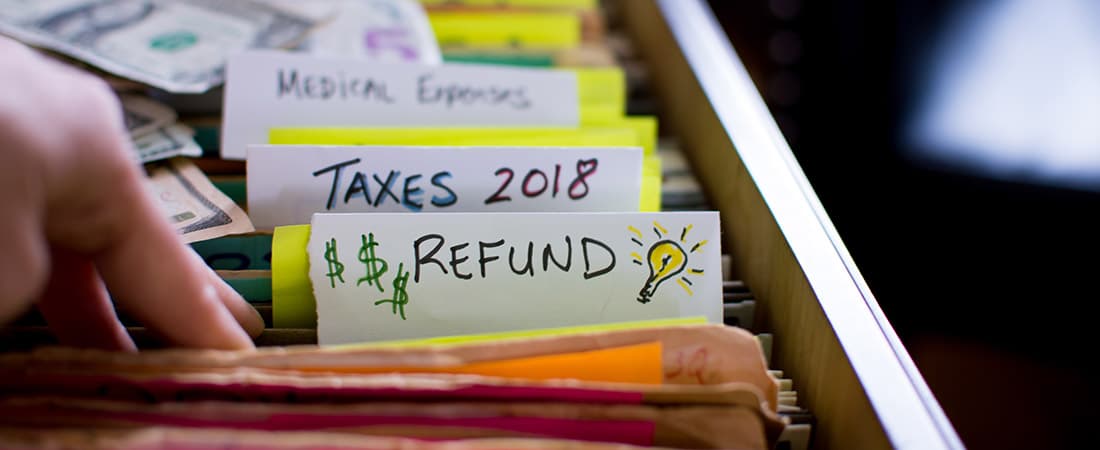Apr 09, 2018
You’re Getting a Tax Refund! What Should You Do With It?
Resist the urge to splurge! Saving or investing that money could take you far

For many people, a federal tax refund is the biggest shot in the arm their bank account will receive all year. With average refunds totaling nearly $3,000, you might be tempted to take that money and splurge.
Be it on a vacation or a shopping spree to pick through the remaining merchandise at your local Toys ‘R’ Us, spending money has a way of making you feel better in the short term.
When you get your check, think about looking further into your future than just your next video game console or a pair of $400 boots.
Chances are your whole life could benefit by bolstering your savings or adding that extra income to your investing or retirement accounts. Think about a down payment on a house. Or a condo on the beach when you’re ready to stop working.
It’s a grown-up move. We think you’re ready to do it.
What’s everybody else doing?
As it turns out, most Americans do two things with their tax refund, according to recent survey data from GOBankingRates.com: Save it (43%) and use it to pay off debt (36%).
U.S. consumers have a hard time saving. More than half of us save less than 10% of our income annually — and 19% don’t save anything at all, according to a recent Bankrate survey.
Fortunately, splurgers are in the minority. The same data shows that 10% plan to use their refund to take a vacation, while 6% will spending it on a luxury purchase. (A further 5% said they will make a major, necessary purchase, like housing repairs.)
Saving is always a good idea
Of course, you could always put that money in an emergency fund, especially if you’re just starting to build your savings. A Federal Reserve report, for example, found that 44% of adults couldn’t pay an unexpected $400 expense.
If you’re in this group, you might consider hanging onto your refund rather than upgrading to the latest and greatest Xbox.
If you must spend, spend smart
Spending isn’t always a bad thing. If you’re receiving a big refund from the IRS this year, you can consider spending it in a way that will improve your financial situation. Paying down debt, for example, will help you in the long run.
Take aim at your high-interest credit card balances, for starters, or hack away at your student loans. You can also upgrade old appliances for newer, more efficient ones.
If your sanity is at risk, by all means, take a vacation! But consider putting some of that money aside to save or invest.

Investing made easy.
Start today with any dollar amount.
Consider investing what you don’t spend
You can always save a part of your refund and still have a little fun. If you were to take half of the average refund this year-around $1,500-and start stashing it away every year, you could potentially have a six-figure nest egg down the road.
Investing in S&P 500 index funds, for example, would’ve netted you an 8% annualized average return over the past 30 years.
That would amount to a portfolio worth roughly about $198,000 today.*
In short, saving or investing your refund may not be as fun as splurging, but it’s the smarter choice for the long-term.
Related articles

budgeting
May 04, 2025
How to Build Credit from Scratch in 2025

budgeting
Apr 27, 2025
Who gets the insurance check when a car is totaled?

budgeting
Apr 09, 2025
How to Make Extra Income While Working Full-Time

budgeting
Apr 08, 2025
How Much Does the Average American Make?

budgeting
Apr 07, 2025
How to Calculate Monthly Income

budgeting
Mar 14, 2025
How to Budget for Large Expenses
By using this website you agree to our Terms of Use and Privacy Policy. To begin investing on Stash, you must be approved from an account verification perspective and open a brokerage account.
